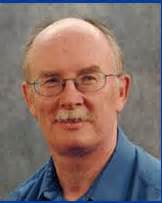
Dr. Steven Hayduk on Autism
By: Audrey Rochester
Dr. Steven Hayduk is a professor of Psychology and a Statistics professor at Southern Wesleyan University. He also has two children, named Matthew and Timothy. Matthew is the oldest of the two, and has recently turned 31! Timothy, Dr. Hayduk’s son and Matthew’s brother, is five years younger than Matthew and currently lives in Toronto. Matthew currently lives with his parents as a result of having Autism.
Autism is a lifelong disorder, meaning that Matthew will have Autism for the rest of his life. Down’s Syndrome is another disorder that is lifelong. How common is Autism in the United States? It appears that Autism is far less common than ADHD or depression, but more common than Down’s Syndrome or Schizophrenia. The percentage of Americans with Autism ranges from around 1.5% to 2%. Compare this with the percentage of depressed Americans, which is around 8% (the percentage of suicidal Americans, less than 0.25%, is comparatively low), and ADHD, which ranges from 5% to 7%. Down’s Syndrome, with a prevalence of less than 0.25%, and Schizophrenia, around 1%, are less common.
On November 12th, 2018, Dr. Steven Hayduk spoke to a group of SWU students about Autism. In his presentation, he defined Autism, listed its symptoms, and talked about its prevalence in the United States. He also shared how Autism impacted the lives of him and his family. He compared his experiences pertaining to his son with the experiences of Ron Suskind, author of Life, Animated, and Ron’s son Owen. Matthew, like Owen, has an obsessive interest that shapes his perceptions of the world. Owen’s fascination was with Disney movies; Matthew’s fascination is with superheroes.
Most people imagine superheroes as costumed, and usually caped, crime-fighters that typically have magic powers or advanced technological gadgets that assist them in saving the world. Matthew’s definition of a superhero is a bit broader than that of most people. Here is a list of some of Matthew’s favorite superheroes: Neo, Superman, the PowerPuff Girls, the Grinch, and Barney (Owen’s interest in Disney movies is somewhat narrow in comparison to Matthew’s broad definition of superheroes). Just how much does Matthew like superheroes? A whole lot! He has a whole library of superhero movies, comic books, and graphic novels; he also collects action figures. He also knows the actors and voice actors of his favorite movies, which to me is fairly impressive. Furthermore, he comprehends the movies watches, as he understands red and blue pill jokes and other references to the Matrix, and he acknowledges the difference between live-action and animated movies. The Matrix, along with all its sequels, was a favorite of Matthew’s for nearly a decade. He’s seen each of the Matrix movies approximately 400 times, as he used to marathon-watch all four of the movies every Saturday, making for 52 viewings per year!
Matthew and Owen both sometimes engage in echolalia, which is usually related to their interests. For example, Owen would often quote lines from various Disney movies, and eventually learned how to speak (and read!) from watching Disney movies. In Matthew’s case, he used to practice singing You’re a Mean One from How the Grinch Stole Christmas. Matthew appears to be sensitive to sound, according to Dr. Hayduk; whenever he passed by a busker on the subway, he would often assert that the music was too loud. Owen, on the other hand, appeared to be somewhat hypo reactive, as Suskind indicated in Life, Animated that Owen had some visual and auditory processing deficiencies.
Both Matthew’s and Owen’s interests involved storytelling. These interests also influenced their perceptions of the world. Owen’s parents taught him how to say and do various things through watching and acting out Disney movies, and used other forms of “early intervention” techniques when raising Owen. Dr. Hayduk, on the other hand, did not use superheroes to teach Matthew, and did not hear much about “early intervention”, as Matthew was diagnosed in the 1980’s, when not much was known about Autism. Dr. Hayduk also stated that by learning more about Autism, we can in turn learn more about ourselves, by gaining insight regarding the human brain and anatomy, and by comparing the biology of those with Autism to those who do not have Autism.
References:
Suskind, Ron. Life, Animated: a Story of Sidekicks, Heroes, and Autism. Kingswell, 2016.